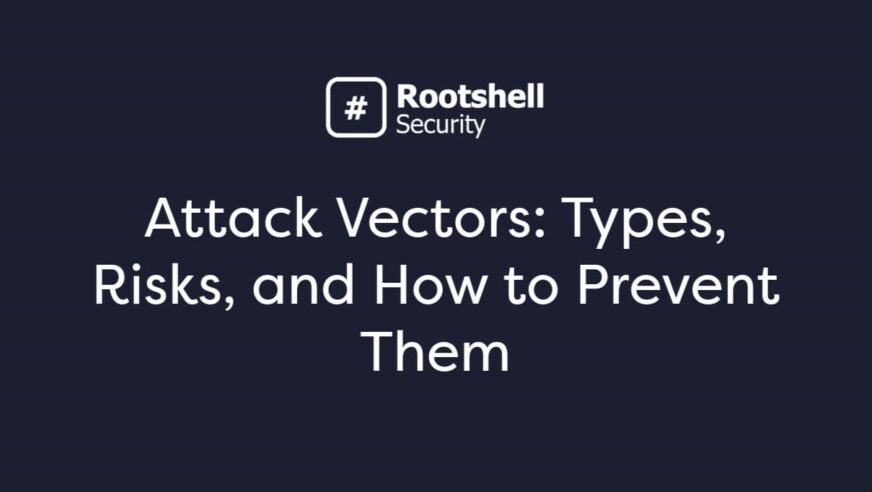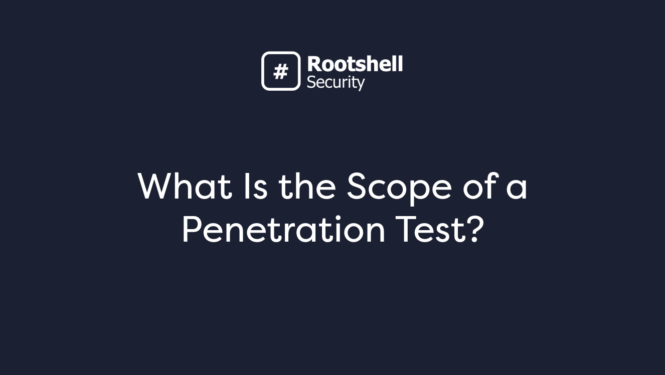An attack vector is the route or method a hacker uses to gain access to a network, system, or device. Now that cyber attacks are becoming more common and sophisticated, knowing how to best protect your business has never been more important for your business. In fact, in 2024, the average global cost of a data breach reached $4.88 million, a 10% increase from the previous year, highlighting the financial impact of data breaches and the increasing threat posed by cyber attacks. In this blog, we’ll explore the concept of attack vectors, the most common types that hackers use, and how organizations can protect themselves from these threats.
Common Types of Attack Vectors
1. Phishing
Phishing attacks are one of the most common forms of attack vectors. Hackers send fraudulent emails that mimic legitimate sources, tricking users into sharing sensitive information like login credentials, financial details, or personal data. Once they gain access, attackers can wreak havoc on systems and steal valuable data. Luckily, Rootshell provides a Phishing Assessment, which gives you intelligence-driven and actionable insight into your organization’s resilience to phishing attacks
2. Malware
Malware refers to malicious software such as viruses, worms, trojans, and ransomware that can be delivered through various channels, such as email attachments, malicious websites, or software vulnerabilities. Once installed, malware can steal data, disrupt operations, and hold systems hostage. You may be surprised to learn that 560,000 new malware are detected daily, showing how important it is to stay aware and protect yourself against these attacks.
3. Compromised credentials
Continuing to use weak usernames and passwords that are easy to guess makes you a prime target for cyber attackers. Compromised credentials are one of the most common attack vectors and occur when credentials are stolen by hackers. Once attackers have access to these credentials, they can infiltrate systems, steal sensitive data, and escalate their access. The danger is then intensified when users reuse passwords across multiple accounts, making it easier for attackers to gain access to a range of systems after obtaining just one set of credentials.
4. Denial of Service (Dos)
A Denial of Service (Dos) attack happens when a hacker floods a server with so much traffic that it crashes, making the service unavailable to legitimate users. In a Distributed Denial of Service (DDoS) attack, multiple devices are compromised, making it even harder to defend against.
5. Zero-Day Exploits
Zero-day exploits target vulnerabilities in software or hardware that have not yet been discovered or fixed.. These vulnerabilities are highly valuable to attackers because there are no defences to protect against them. Ongoing vulnerability scanning offered by Rootshell Security helps detect potential entry points early, allowing you to address them before attackers can exploit them.
6. Man-in-the-Middle (Mitm) Attacks
In Mitm attacks, hackers intercept communication between two parties, often to steal sensitive information or inject malicious content. This can happen when using unsecured Wi-Fi networks or through compromised routers, making it a serious threat to both individuals and organizations.
How Do Cyberattackers Expose Attack Vectors?
Hackers have a deep understanding of security attack vectors. When planning an attack, they usually begin by identifying vulnerabilities or security gaps they believe they can exploit.
A security vulnerability can exist in software or a computer operating system. There may be a programming flaw or an incorrect security configuration. In some cases, attacks can be more low-tech, such as stealing an employee’s security credentials or physically breaking into a building. For example, RootShell Security’s exploration of physical door attacks reveals how attackers can bypass physical barriers and gain access to secure environments. Some of the tactics hackers use to gain access include:
Social Engineering: Hackers manipulate individuals into providing access or revealing sensitive information. This can be done through phishing emails, phone calls, or fake websites. Learn more about social engineering attacks and how to protect your team by checking out our guide to social engineering in cybersecurity.
Exposing Software Vulnerabilities: Attackers target vulnerable software to expose known vulnerabilities, gaining access to systems and causing damage. RootShell Security’s active exploit detection & protection help identify these vulnerabilities before attackers can exploit them. You should keep software updated and use vulnerability detection tools to prevent such attacks.
Attack Vector vs Attack Surface
The terms attack vector and attack surface are often used interchangeably, but they represent different aspects of cybersecurity.
- Attack Vector: This refers to the specific route or method an attacker uses to exploit a vulnerability. It is the “how” of an attack, like phishing emails, malware, or SQL injections.
- Attack Surface: This represents the total sum of all potential points of entry into a system, including devices, services, networks, applications, and even employees.
A larger attack surface means more potential vulnerabilities for attackers to exploit. To manage and reduce your attack surface, services like Rootshell’s Attack Surface Identification, Mapping, and Management provide insights and help identify, map, and protect these entry points before cybercriminals can take advantage of them.
Passive vs. Active Attack Vector Exploits: What’s the Difference?
Attackers can exploit attack vectors in either passive or active ways, depending on the strategy they use:
Passive Attack
A passive attack happens when an attacker quietly monitors a system to identify vulnerabilities or sensitive information without making any alterations to the system. Unlike active attacks, passive attacks are difficult to detect because they do not involve tampering with data or system resources. The goal is not to cause direct damage, but rather to compromise the confidentiality of the data being transmitted or stored.
In a passive attack, the attacker refrains from interfering with the system’s operations. Instead, they focus on gathering valuable information for future exploitation. Examples include eavesdropping on unencrypted communications, intercepting network traffic, or analyzing metadata to uncover sensitive details.
Active Attack
In an active attack, the attacker takes deliberate action to disrupt, damage, or compromise a system. This can involve injecting malware, launching a distributed denial-of-service (DDoS) attack, or exploiting vulnerabilities to gain access. An active attack vector is designed to directly interfere with your systems or operations. These attacks target system vulnerabilities, expose weak user passwords, or deliver malicious payloads through malware and phishing.
A typical example of this is a masquerade attack, where an intruder impersonates a trusted user to steal login credentials and gain access to sensitive resources. Active attacks are frequently used by cybercriminals to breach systems and gather the information needed for larger-scale cyberattacks.
How Can You Protect Your Organization from Attack Vectors?
Securing attack vectors requires a multi-layered approach to cybersecurity. Here are some steps to help protect your organization:
1. Regularly Update Software
One of the easiest and most effective ways to protect yourself is by regularly updating your software and systems. Finding and fixing any vulnerabilities before they become exposed by hackers is important.
2. Implement Firewalls and Intrusion Detection Systems
Firewalls and intrusion detection systems (IDS) act as barriers between your network and potential attackers. They help detect and block malicious traffic, reducing the risk of attacks through common vectors like DDoS or malware. To further strengthen your defenses, Rootshell Security offers Firewall Penetration Testing, which simulates real-world attacks on your firewall to identify vulnerabilities before attackers can exploit them.
3. Employee Training
Employees are often the weakest link in cybersecurity defenses. Conduct regular security awareness training to help staff recognize phishing attempts, suspicious links, and other common attack vectors.
4. Use Strong Authentication Methods
Multi-factor authentication (MFA) is an advanced security measure that helps prevent unauthorized access to systems, even if attackers manage to steal passwords. By requiring an additional verification step, such as a text message, authenticator app, or biometric scan, MFA adds an extra layer of protection to important accounts. According to Microsoft, over 99.9% of compromised accounts did not have MFA enabled, highlighting how important this security measure is for safeguarding sensitive data and systems
5. Encrypt Sensitive Data
Encryption ensures that even if attackers manage to intercept data through an attack vector like a Mitm attack, they will not be able to read or use it without the encryption key.
6. Conduct Penetration Testing
Regularly test your systems through penetration testing to identify vulnerabilities and evaluate how well your defences can withstand a real-world attack. Rootshell Security’s Penetration Testing as a Service uncovers hidden attack vectors and assesses your security posture before attackers can exploit any weaknesses.
Protect Yourself Against Attack Vectors with Rootshell Security
At Rootshell, we give you the power to take control of your cybersecurity by offering solutions that help identify vulnerabilities, manage risks, and reduce exposure to potential threats. Don’t wait until it’s too late—book a demo with one of our specialists today and start building a more resilient cybersecurity strategy.
Frequently Asked Questions
What best describes an attack vector?
An attack vector is a method or pathway that cybercriminals use to gain unauthorized access to a system or network. It represents the specific route through which an attacker can exploit vulnerabilities to compromise security, steal data, or disrupt operations.
Which three attack vectors are typically used?
The three most common attack vectors are phishing, malware, and social engineering. Phishing involves deceiving individuals into revealing sensitive information, malware refers to malicious software that compromises a system, and social engineering manipulates individuals into bypassing security protocols.
What is the difference between an attack vector and a vulnerability?
An attack vector is the method or path used by an attacker to exploit a vulnerability, while a vulnerability is a weakness or flaw within a system that could be exploited. Essentially, a vulnerability is the weak point, and the attack vector is the route the attacker takes to exploit that weakness.
What are DDoS attack vectors?
Distributed Denial of Service (DDoS) attack vectors involve overwhelming a system or network with excessive traffic, rendering it unavailable to legitimate users. These attacks typically use multiple compromised devices (botnets) to flood the target with requests, causing disruption or downtime.
What is another name for an attack vector?
Another name for an attack vector is an “attack path.” It refers to the specific route or method through which an attacker can infiltrate a system and carry out malicious activities.
What is the most common cyber attack?
Phishing is considered the most common cyber attack. It involves sending deceptive messages, often through email, to trick individuals into revealing sensitive information such as passwords, financial details, or login credentials. Phishing remains a widely used and highly effective method for attackers to gain access to systems.



